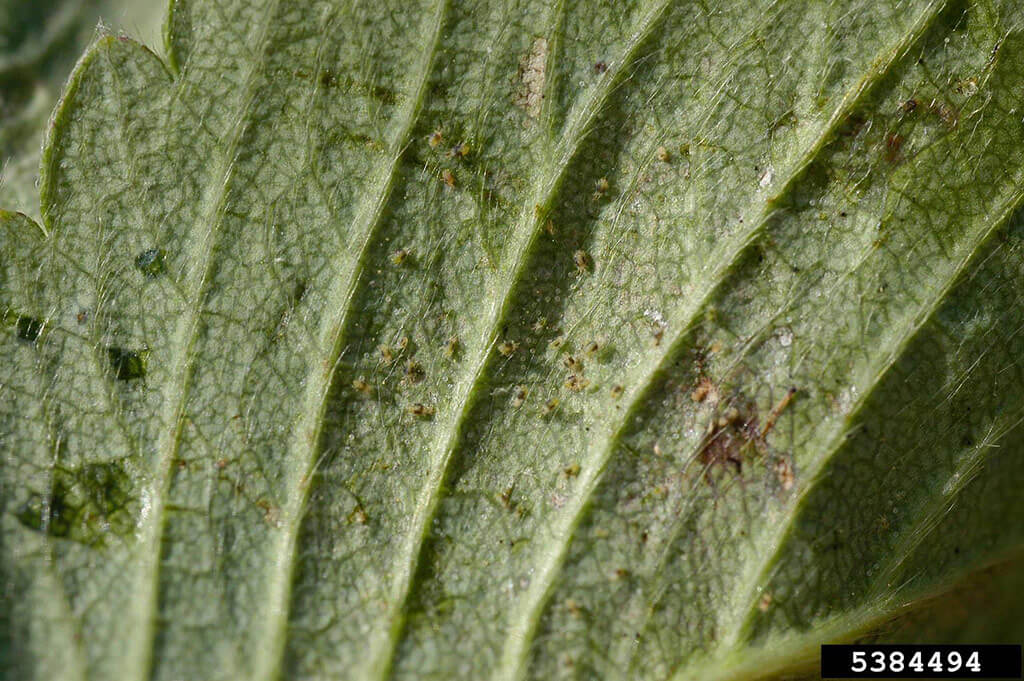
Spider mites inconspicuously spin webs on the undersides of your plants, sucking sap. If you don't inspect your plants closely on a regular basis, you may not even notice them until the damage is well underway. But there are plenty of things you can do from keeping these sneaky spiders from hanging out in your garden. Here's how to prevent and get rid of spider mites.
How to Get Rid of Spider Mites
What are spider mites?
Spider mites are tiny spiders that are so small—about the size of the period at the end of this sentence—you can hardly see them. Often you don't even know they're there until the damage starts. A classic symptom of their attack is that upper leaf surfaces develop a speckled or dappled appearance, followed by yellowing and drying out. Eventually, leaves fall from the plant.
Spider mites make cobwebs on the undersides of leaves. In severe infestations, webs can cover both the tops and bottoms of leaves. They can even entirely cover new buds and plant shoots. Spider mites multiply rapidly and spread from plant to plant by wind, so it's crucial to control them as soon as you spot them.
Spider mites are often worst during hot, dry weather. They wreak havoc on a wide variety of plants, including vegetables, fruits, flowers, and houseplants.
How do I prevent spider mites?
As with many garden pests, a clean, well-maintained garden is key to preventing these small spiders from infesting your plants. Follow these tips.
- Clean the garden. Sometimes it feels like mites have a way of finding your garden no matter what, but you can delay their appearance by cleaning up the garden at the end of the season.
- Attract beneficial insects. Ladybug and lacewing larvae feed on spider mites. These larvae look like miniature alligators (really!) and can be mistaken for a pest. Nurture these insects in your garden by growing flowers they love, such as sweet alyssum, and making sure you have a steady stream of nearby blooms throughout the growing season. Likewise, you can help repel spider mites by planting cilantro and dill, two herbs they dislike.
- Keep your garden and nearby areas weed-free. Many weeds also host spider mites, giving them a place to feed and multiply until your crops appear in the garden.
How do I get rid of spider mites?
Depending on the level of infestation, you have a couple of options when it comes to eliminating spider mites.
- Remove affected growth. Pruning will work if you have a small infestation. If you're dealing with a heavy infestation, consider pulling plants to prevent mites from spreading to other garden crops.
- Spray Neem, ultra-fine oil, or insecticidal soap, thoroughly covering leaf undersides, shoots, and tops of leaves. You will probably need to spray two or three times because some spider mites always manage to survive under the protective cover of the web. Use a forceful enough spray to penetrate the web. You may want to prune out the most heavily infested parts of plants before spraying.
If you have an infestation, you'll want to keep your plants thoroughly watered through dry spells. This will help minimize the damage spider mites can cause.
Need more info and local pesticide recommendations? Contact your regional Extension agent. You can find the nearest Extension office through the Cooperative Extension System map.
Spider mites can be sneaky, but that doesn't mean you can't fight back. Keep your garden clean, attract beneficial insects, and prune or spray as soon as you see damage.






 Herbs
Herbs
 Vegetables
Vegetables
 Fruit
Fruit
 Flowers
Flowers
 Succulents
Succulents

